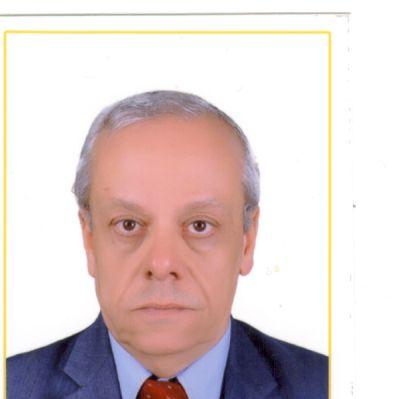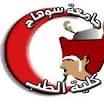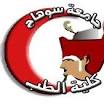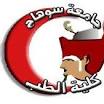COURSE SPECIFICATION OF DERMATOLOGY, VENEREOLOGY & ANDROLOGY FOR MASTER DEGREE IN DERMATOLOGY, VENEROLOGY AND ANDROLOGY
ٍSohag University Faculty of Medicine
- Program on which the course is given: Master degree of Dermatology, Venereology and Andrology (2nd part).
- Major or Minor element of program: Major
- Department offering the program: Dermatology, Venereology, and Andrology Department.
- Department offering the course: Dermatology, Venereology, and Andrology Department.
- Academic year / Level: 2nd part.
- Date of specification approval: Faculty council No. "250", decree No. "1378" dated 28/12/2013
- Basic Information
Title: Dermatology & Venereology, and Andrology Course for Master degree (Second part)
Code: DER 0507-200
Total hours:
Module |
Lectures: |
Practical: |
Tutorial |
credit hours: |
Dermatology |
135 hrs |
180 hrs |
3 semesters |
15 |
Venereology, and Andrology |
90 hrs |
120 hrs |
3 semesters |
10 |
- Professional Information
- Overall Aims of Course:
Dermatology module:
By the end of the course and training, the graduates should be able to:
- Properly describe a dermatology case using the terminology accepted by dermatologists in order to be able to communicate with colleagues and consultants in the field.
- Diagnose and effectively treat skin diseases prevalent in the community or those of public health importance.
- Be able to carry out specialist assessment and management of a patient presenting with a dermatosis in both an inpatient and outpatient hospital setting
- Be able to evaluate patients for contact urticaria and type I hypersensitivity and perform prick testing safely.
- Be able to diagnose and manage patients with a photosensitive disease.
Venereology & Andrology module:
By the end of the course and training, the student should be able to:
- Diagnose and treat STDs prevalent in the community.
- Be aware of the changing pattern of STDs during the last three decades, their epidemiology and the factors contributing to increased prevalence.
- Knows the causes, diagnosis and treatment of male infertility
- Define causes, diagnostic procedures and treatment options of male sexual dysfunction.
- Diagnose and treat female sexual dysfunction.
- Intended Learning Outcomes of Course (ILOs):
Dermatology module:
- Knowledge and Understanding:
By the end of the course, the graduate is expected to gain knowledge and understanding of:
- Mention the normal structure and function of the human intugmentary system on the macro and micro levels.
- Mention the normal growth and development of the human intugmentary system.
- Mention the abnormal structure, function, growth and development of human intugmentary system and natural history of various dermatological diseases.
- Mention the natural history of Dermatological problems.
- Enumerate the common diagnostic and laboratory techniques necessary to establish diagnosis of dermatological illnesses.
- Mention the causation of disease and disease pathogenesis.
- Enumerate methods of promoting health and preventing illness.
- Describe the scientific methods of establishing disease causation of dermatological illnesses.
- Mention the various diagnostic and laboratory techniques necessary to establish diagnosis of various dermatological illnesses.
- List the various therapeutic methods /alternatives used for various dermatological illnesses.
- List scientific development in the field of Dermatology.
- Mention the mutual influence between professional practice and its impacts on the environment.
- Mention the ethical and legal aspects of professional practice in the field of Dermatology.
- Mention the principles and fundamentals of quality of professional practice in the field of Dermatology.
- Mention the basics and ethics of scientific research.
- Intellectual Skills:
By the end of the course, the student is expected to be able to:
- Integrate data acquired through history taking to reach a provisional diagnosis for various Dermatological problems.
- Select from different diagnostic alternatives the ones that help reaching a final diagnosis for Dermatological problems.
- Link between knowledge for Professional problems' solving.
- Conduct research study and/or write a scientific study on a research problem.
- Assess risk in professional practices in the field of Dermatology.
- Plan to improve performance in the field of Dermatology.
- Identify Dermatological problems and find solutions.
- Analyze researches and issues related to Dermatology.
- Professional and Practical Skills:
By the end of the course in department of Dermatology, the graduate is expected to be able to:
- Master of the basic and modern professional skills in the area of Dermatology.
- Perform physical examination of patients for dermatological system.
- Interpret the results of diagnostic procedures.
- Diagnose common illnesses.
- Recognize patients with life threatening dermatological conditions and initiate the proper management according to patient's needs.
- Write a treatment prescription.
- Write and evaluate clinical reports.
- Perform basic diagnostic and therapeutic techniques and measures in this practice (skin biopsy, intradermal injections using dermojet, electrocautery, etc)
- General and Transferable Skills:
By the end of the course, students are expected to be able to:
- Communicate effectively by all types of effective communication.
- Use information technology to serve the development of professional practice
- Assess himself and identify personal learning needs.
- Use different sources to obtain information and knowledge.
- Develop rules and indications for assessing the performance of others.
- Work in a team, and team's leadership in various professional contexts.
- Manage time efficiently.
- Learn himself continuously.
Venereology & Andrology module:
- Knowledge and Understanding:
By the end of the course, the graduate is expected to be able to:
- Mention the normal structure and function of the human reproductive system on the macro and micro levels.
- Understand the normal growth and development of the human reproductive system.
- Describe the abnormal structure, function, growth and development of human reproductive system and natural history of various venereal and andrological diseases.
- Describe the natural history of Venereal and Andrological problems.
- Enumerate the common diagnostic and laboratory techniques necessary to establish diagnosis of venereal and andrological illnesses.
- Mention the causation of disease and disease pathogenesis.
- Enumerate methods of promoting health and preventing illness.
- Describe the scientific methods of establishing disease causation of venereal and andrological illnesses.
- Describe the various diagnostic and laboratory techniques necessary to establish diagnosis of various venereal and andrological illnesses.
- List the various therapeutic methods /alternatives used for various venereal and andrological illnesses.
- Describe scientific development in the field of Venereology and Andrology.
- Describe the mutual influence between professional practice and its impacts on the environment.
- Mention the ethical and legal aspects of professional practice in the field of Venereology and Andrology.
- Know the principles and fundamentals of quality of professional practice in the field of Venereology and Andrology.
- Know the basics and ethics of scientific research.
- Intellectual Skills:
By the end of the course, the graduate is expected to be able to:
- Integrate data acquired through history taking to reach a provisional diagnosis for various Venereal and Andrological problems.
- Select from different diagnostic alternatives the ones that help reaching a final diagnosis for Venereal and Andrological problems.
- Link between knowledge for Professional problems' solving.
- Conduct research study and/or write a scientific study on a research problem.
- Assess risk in professional practices in the field of Venereology and Andrology.
- Plan to improve performance in the field of Venereology and Andrology.
- Identify Venereal and Andrological problems and find solutions.
- Analyze researches and issues related to Venereology and Andrology.
- Professional and Practical Skills:
By the end of the course, the graduate is expected to be able to:
- Describe the basic and modern professional skills in the area of Venereology and Andrology.
- Perform physical examination of patients for reproductive systems.
- Interpret the results of diagnostic procedures.
- Diagnose common illnesses.
- Write a treatment prescription.
- Write and evaluate semen reports.
- Perform basic diagnostic and therapeutic techniques and measures in this practice (semen analysis, intracorporeal injections etc)
- General and Transferable Skills:
By the end of the course, students are expected to be able to:
- Communicate effectively by all types of effective communication.
- Use information technology to serve the development of professional practice
- Assess himself/herself and identify personal learning needs.
- Use different sources to obtain information and knowledge.
- Develop rules and indications for assessing the performance of others.
- Work in a team, and team's leadership in various professional contexts.
- Manage time efficiently.
- Learn himself continuously.
- Contents:
Dermatology module:
|
Topic |
No. of hours |
Lecture |
Practical |
|
Anatomy and functions of skin |
5 |
2 |
3 |
|
Ethical & legal aspects and fundamentals of quality of professional practice in Dermatology |
2 |
2 |
-- |
|
Basics and ethics of scientific research in dermatology |
2 |
2 |
--
|
|
Diagnosis of skin disease |
3 |
2 |
1 |
|
Pathological diagnosis of skin diseaes |
4 |
2 |
2 |
|
Molecular biology and basic genetics |
4 |
2 |
2 |
|
Cutaneous pyogenic infections |
6 |
4 |
2 |
|
Cutaneous viral infections |
7 |
6 |
1 |
|
Mycology |
7 |
5 |
2 |
|
Parasitic skin diseases |
11 |
6 |
5 |
|
Mycobacterial Infections |
12 |
6 |
6 |
|
Eczema (Dermatitis) |
10 |
7 |
3 |
|
Papulo-Squamous diseases |
9 |
7 |
2 |
|
Connective tissue disorders |
15 |
6 |
9 |
|
Disorders of sebaceous glands |
7 |
4 |
3 |
|
Disorders of sweat glands |
8 |
2 |
6 |
|
Pigmentary disorders |
12 |
6 |
6 |
|
Diseases of Hair and nails |
11 |
6 |
5 |
|
Genodermatosis |
7 |
3 |
4 |
|
Blistering dermatosis |
21 |
8 |
13 |
|
Non-infectious granulomas |
7 |
4 |
3 |
|
Photodermatosis |
7 |
4 |
3 |
|
Cutaneous vascular diseases |
7 |
3 |
4 |
|
Tumors of the skin |
25 |
10 |
15 |
|
Cutaneous lymphomas |
8 |
4 |
4 |
|
Mastocyosis and histocytosis |
9 |
5 |
4 |
|
Cutaneous drug reactions |
9 |
3 |
6 |
|
Skin and systemic diseases |
7 |
2 |
5 |
|
Neonatal dermatology |
5 |
2 |
3 |
|
Pruritis and prurigo |
5 |
3 |
2 |
|
Disorders of keratinization |
10 |
3 |
7 |
|
Dermatological surgery |
6 |
2 |
4 |
|
Topical and systemic therapy |
6 |
2 |
4 |
|
Total |
315 |
135 |
180 |
|
Credit |
15 |
9 |
6 |
Venereology & Andrology module:
|
Topic |
No. of hours |
Lecture |
Practical |
|
Introduction |
2 |
2 |
- |
|
Ethical & legal aspects of professional practice |
2 |
2 |
- |
|
Principles of quality of professional practice |
2 |
2 |
- |
|
Anatomy of genital organs |
9 |
2 |
7 |
|
Physiology of erection and ejaculation |
15 |
8 |
7 |
|
Male sexual dysfunction |
27 |
15 |
12 |
|
Female sexual dysfunction |
18 |
8 |
10 |
|
Semen evaluation |
23 |
7 |
16 |
|
Male infertility |
28 |
18 |
10 |
|
Male urethral discharge |
25 |
10 |
15 |
|
Vaginal infection |
15 |
5 |
10 |
|
Syphilis |
15 |
5 |
10 |
|
Genital ulcers |
14 |
4 |
10 |
|
HIV |
9 |
4 |
5 |
|
Genital dermatosis |
12 |
4 |
8 |
|
Total |
210 |
90 |
120 |
|
Credit |
10 |
6 |
4 |
- Teaching and Learning Methods:
4.1-lectures
4.2- Clinical / practical lessons
4.3- Assignment
4.4- Attending and participating in scientific conferences, workshops and thesis discussion to acquire the general and transferable skills needed.
- Student Assessment Methods:
|
The assessed ILOs |
Method of assessment |
|
- General transferable skills, intellectual skills
- Knowledge - Knowledge - Knowledge, intellectual skills - Intellectual skills, General transferable skills, - Practical skills, intellectual skills - Knowledge |
5.1- Observation of attendance and absenteeism. 5.2-Written Exams: -Short essay: 40% -structured questions: 25% -MCQs: 20% -Commentary, Problem solving: 15% 5.3-Structured Oral Exams |
Assessment Schedule:
Assessment 1: Review week: 12-16
Assessment 2: Review week: 72-76
Assessment 3: log book week: 80 (Formative exam)
Assessment 4: Final written Exam week: 96-98
Assessment 5: Oral Exam week: 96-98
Assessment 6: Clinical Exam week: 96-98
Weighting of Assessments
|
40 % |
Written Examination |
|
60% |
Oral Examination |
|
0 % |
Other types of assessment |
|
100% |
Total |
Formative only assessment: simple research assignment, Log book, attendance and absenteeism
- List of References:
Dermatology module:
6.1- Essential Books (Text Books):
Andrews text book of dermatology,2011
6.2- Recommended Books:
Rook`s text book of dermatology,2010
Lever`s text book of histopathology
6.3- Periodicals and Web Sites:
Journal of American Academy of Dermatology
Clinics in dermatology
International journal of dermatology
British journal of dermatology
Venereology & Andrology module:
6.1-- Essential Books (Text Books)
Text book of Andrology by Dr. Ashraf Fayez,2009
6.2- Recommended Books
Text book of Erectile dysfunction
6.3- Periodicals and Web Sites:
Journal of urology
Fertility and Sterility
British journal of urology
Asian Journal of Andrology
- Facilities Required for Teaching and Learning:
- Adequate infrastructure including: teaching rooms, comfortable desks.
- Teaching tools including screen, slide Projector, computer and data show.
- Laboratory microscopes.




